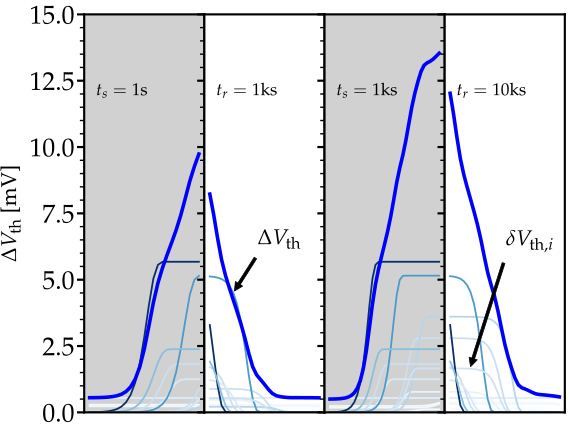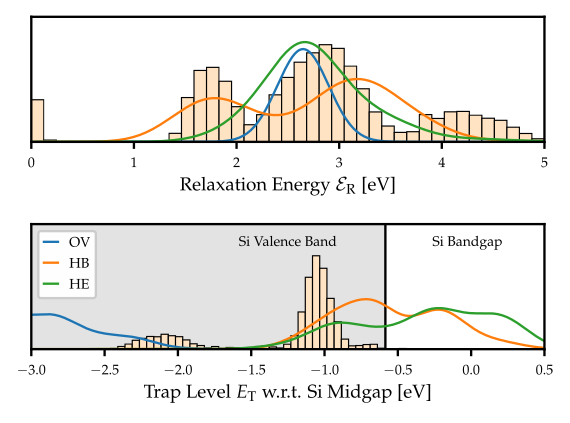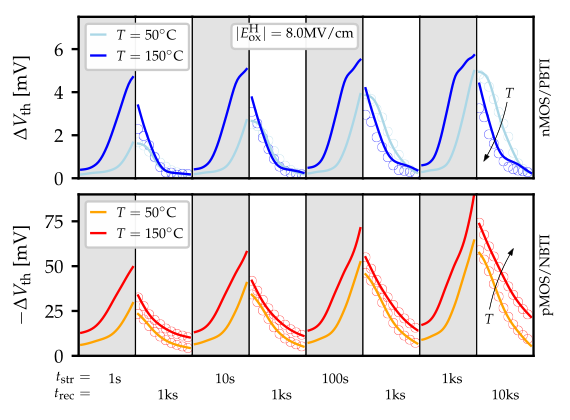 |
|
||||
BiographyDominic Waldhör was born in Linz, Austria in 1992. He studied at the TU Wien, Vienna, Austria where he received the BSc degree in Electrical Engineering and the Diplomingenieur degree in Microelectronics and Photonics in 2018. He joined the Institute for Microelectronics in October 2018 where he works as PhD student. His current research focuses on the ab initio simulation of oxide defects in semiconductor devices. |
|||||
Automated Defect Characterization Based on BTI Measurements
Bias temperature instability (BTI) refers to a shift of the threshold voltage during device operation. Based on our current understanding, this shift is primarily caused by charge trapping at defects located in the oxide or at the interfacial layer and is one of the limiting reliability challenges for modern MOSFET technologies. Predicting BTI degradation over the device lifetime requires detailed knowledge about the involved defects and their charge trapping behavior under varying temperatures and gate biases. In large-area devices, this information is typically gathered by applying stress-measure-stress (MSM) measurements to the device. In order to extract the underlying defect parameters, such as trap position, relaxation energy, etc., they are assumed to follow a certain distribution, e.g. a Gaussian distribution, and the parameters, like mean and standard deviation, are adjusted to match their collective measured time response. However, optimizing distribution parameters is a tedious and labor-intensive task due to a pronounced non-linear relationship between trap parameters and the corresponding observed drift of the threshold voltage.
We developed an algorithm for automated extraction of defect parameters from experimental MSM data in our recent work. As shown in Fig. 1, the algorithm decomposes a given MSM sequence into effective single defect contributions. The weights assigned to each of these defects are determined using a non-negative linear least square estimator, resulting in the parameter distribution shown in Fig. 2. Note that this approach is not limited by a particular choice of parameter distribution function. Hence, our algorithm is much more flexible than existing approaches and allows for the efficient and accurate extraction of defect characteristics from measurement data. We employ this technique to extract defect bands from planar 180 nm devices with an SiON dielectric in a proof-of-concept. As shown in Fig. 3, the obtained model accurately describes the measured degradation over a wide time and temperature range. Finally, we expect our approach to be useful for extracting defect parameters in novel material systems, like SiC/SiO2, or in devices made from 2D materials, where currently very limited information is available.

Fig. 1: Decomposition of ΔVth in an MSM sequence in effective single-defect contributions δVth.

Fig. 2: Extracted defect parameter distribution for the tested SiON dielectric. There is good agreement with theoretical values for hydrogen-related defects obtained from density functional theory calculations

Fig. 3: Final BTI model from the extracted defect parameter distribution. There is excellent agreement with experimental degradation over a broad temperature and time span.


